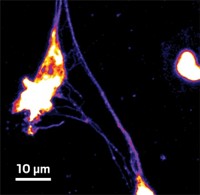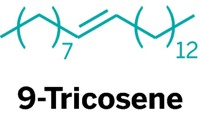Advertisement
Grab your lab coat. Let's get started
Welcome!
Welcome!
Create an account below to get 6 C&EN articles per month, receive newsletters and more - all free.
It seems this is your first time logging in online. Please enter the following information to continue.
As an ACS member you automatically get access to this site. All we need is few more details to create your reading experience.
Not you? Sign in with a different account.
Not you? Sign in with a different account.
ERROR 1
ERROR 1
ERROR 2
ERROR 2
ERROR 2
ERROR 2
ERROR 2
Password and Confirm password must match.
If you have an ACS member number, please enter it here so we can link this account to your membership. (optional)
ERROR 2
ACS values your privacy. By submitting your information, you are gaining access to C&EN and subscribing to our weekly newsletter. We use the information you provide to make your reading experience better, and we will never sell your data to third party members.
Biological Chemistry
Fishing For Inflammation Tamers
Zebrafish with fluorescent immune cells help researchers identify potential anti-inflammatory treatments
by Lauren K. Wolf
March 3, 2014
| A version of this story appeared in
Volume 92, Issue 9
When a person is injured, cells called neutrophils are some of the first members of the immune system to respond. Once they arrive on the scene of an injury, the cells attack foreign pathogens trying to invade the tissue by engulfing the microorganisms and releasing inflammatory compounds that break the invaders down. But sometimes, neutrophils overstay their welcome, making it difficult for tissue to heal—something that occurs in chronic inflammatory disorders such as rheumatoid arthritis. To find treatments for these conditions, a research team led by Stephen A. Renshaw of the University of Sheffield, in England, screened a library of molecules using zebrafish larvae genetically engineered to have fluorescent neutrophils. The scientists nicked off the tips of the animals’ tail fins, added test molecules to the water in which the fish swam, and 12 hours later examined the number of fluorescing cells in the animals’ tails (Sci. Transl. Med. 2014, DOI: 10.1126/scitranslmed.3007672). One promising molecule that caused neutrophils to migrate away from the injury site is tanshinone IIA, a compound derived from the Chinese medicinal herb Salvia miltiorrhiza. “If we can work out exactly how tanshinone IIA is acting on the neutrophils, then we might be able to target this mechanism and develop new anti-inflammatory therapies,” Renshaw says.




Join the conversation
Contact the reporter
Submit a Letter to the Editor for publication
Engage with us on Twitter